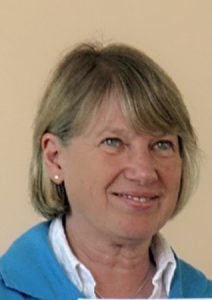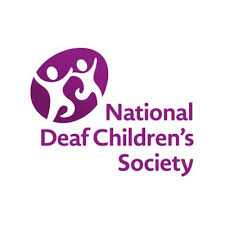Reading and Deaf Children – an overview


by Susan Gregory and Linda Watson
In the 1960s and 70s most of the focus within deaf education was on speech and spoken language and there was little discussion of teaching reading to deaf pupils. Looking back from a current perspective it seems strange that so little consideration was given to this either in the accounts of deaf children or in articles in teachers’ journals in the 1960s and 70s. On reflection though, one might consider the greater concern was related to the establishment of spoken language, as at that time sign language was not viewed as a language for education.
For example, the Government Report on deaf children’s education entitled ‘The education of deaf children: The possible place of fingerspelling and signing’ (also known as the Lewis Report) was published in 1968 and made little mention of reading. Also, the 1970 International Congress of the Deaf held that year in Stockholm did not include a single paper specifically related to deafness and the teaching of reading. This compares with hearing children where, at that time, reading was a major focus of attention. (Note: [1] An exception to this is a fictional account, in a novel ‘The day is ours’ by Hilda Lewis, written in 1947. An excerpt is included in the personal accounts part of this section).
In the Teacher of the Deaf journal, published by the National College of Teachers of the Deaf, the articles published in the 1960s and 70s included few articles on the topic of reading. Those that were published addressed themes such as the use of i.t.a (initial teaching alphabet), the need for books with good illustrations, and the importance of making reading interesting.
- In the 1962 the Initial Teaching Alphabet was in vogue in the teaching of hearing children. It used a variant of the Latin alphabet developed by St James Pitman which was phonetic so once children had learnt the sounds of the letters, they could read. Pitman (1962) argued that its consistency in matching sounds to letters should help deaf children and asked why they should be asked ‘to swallow our untidy language whole?’ It seems strange that it was thought that this might be helpful to deaf children as their difficulty was more complex than sounding out letters and more related to knowledge of the language. While this approach was popular with hearing children, it was not totally successful as it was discovered that some children found it difficult to transfer from the modified print to English printing and in time it went out of favour. Although there was a serious attempt to use it with some deaf children it was never adopted on a large scale.
- The issue of reading books that were suitable for deaf children became a focus for discussion in the 1960s and it was suggested that some books for hearing children with good illustrations could be adapted for deaf children. Ladybird books and the Oxford Colour Readers were series that were favoured here because of their engaging illustrations, although often the text was too difficult. Teachers spent time developing and pasting revised text in the books, which could be a time-consuming task (Report from Midlands Branch One Day Conference 1967). However, the conference resulted in a group being set up to share resources and ideas and contacts with publishers were also established.
- In 1967, Michael Rodda attended the Heads of Schools conference. He developed further ideas that emerged from the discussion of making reading books more interesting as described above. He pointed out that his research showed that deaf children looked at popular teenage magazines as frequently as hearing children. It did not mean deaf children were reading them in the same way but they could often give a good account of what they had understood from looking at the magazines. School texts may not be as interesting as popular newspapers but he suggested they could stimulate an interest in reading.
However, during the 1970s and 80s serious questions were starting to be asked about deaf children’s reading skills. Two books published then focused attention on concerns about deaf children’s reading. Conrad’s book ‘The Deaf Schoolchild’ was published in 1979. This was followed by the work by Wood and associates ‘Teaching and Talking with Deaf Children’ in 1986. The studies reported in these books opened up the discussion on deaf children’s reading.
Both suggested in different ways that deaf children had significant problems in learning to read. Conrad carried out a large scale study of 359 school leavers aged between 15 and 16 ½ years. In his study, reading was assessed using the Brimer Wide-span Reading Test which had the advantage of not having been used in Schools for the Deaf before. The median reading age based on the whole school population of deaf pupils then was 9.0. This is comparable with a study at that time of 17,000 pupils in the USA which gave a similar median reading age of 9.2 years. Conrad concluded that for the more deaf pupils with a hearing loss of more than 86dB ‘almost 50% have no reading comprehension at all, while for the less deaf children ‘some 25% are without any reading comprehension’. (1979 p 154). In concluding his chapter on reading he writes ‘It is clear – and not an overstatement – that we do not know how to teach deaf, or even partially hearing children to read (1979 p175).
Wood and his associates set out to establish what lay behind these figures – why were deaf children such poor readers. One of the studies he carried out was to compare the errors of deaf children with those of hearing children of the same reading age. They found a different pattern of errors in that deaf pupils were more likely to make ‘non-linguistic errors’ than their hearing counterparts. In selecting a word to fill a blank space, they were more likely to respond with a word that looked similar to the correct word, or that sounded similar, or had a similar meaning than to choose the correct word. It suggests that deaf children were doing something quite different from hearing children in order to achieve their reading score.
They also looked at teachers listening to deaf children read compared with hearing children reading to their teachers. They found many more interruptions with the deaf children than hearing children. This applied to both those interruptions initiated by pupils and those by teachers. Unlike with hearing children, with deaf children the teacher would be more likely to stop them when the child pronounced a word incorrectly. An even greater difference was that teachers of deaf children were more likely to stop a child reading in order to teach the meaning of words with the result that deaf children were stopped so frequently that they did not read at a sufficient speed to gain meaning. It seemed that Teachers of the Deaf seemed to use reading for more varied purposes than learning to read.
Many Teachers of the Deaf were not surprised by these findings. At this time reading and (spoken) language learning were very much bound together. Items in classrooms were labelled, with the idea being that seeing the written word would ‘fix’ the word in the child’s mind, since the written word is permanent whilst the spoken word is fleeting and may only be partially heard. The emphasis in writing was on phrases or sentences rather than single words. This meant that deaf pupils were expected to read and write beyond the level of their spoken language development. The idiocy of this expectation was highlighted by Harrison and Simpson (Harrison and Simpson (1991)).
During the 1980s and into the early 1990s, there were gradual changes in approach to both reading and writing for deaf pupils. In some schools for the deaf and other provisions, periods of silent reading were introduced when all the pupils and the staff sat and read by themselves. This practice was innovative in giving some control to the pupils over their own reading, both the choice of what they read and the speed at which they read it. They were also free to look ahead in the book or to reread passages to gain meaning. This practice also introduced the concept of reading for pleasure.
In schools where the Maternal Reflective Method (MRM) was used this link was more apparent. MRM was an approach to language teaching which was established by Father van Uden in Holland. It used the whole experience of the child to establish and develop language including speech, reading and writing. It started with the child’s experience and learning took place through doing and discovering, shared interaction and conversation. Initial conversations were followed by reading and reflection.
Improvements in hearing aid provision for deaf pupils, including the introduction of digital hearing aids and cochlear implants, contributed in part to improvements in deaf pupils’ reading levels. The greater access to the range of speech sounds that these new aids provided meant that increasing numbers of deaf pupils could both hear and reproduce more of the sounds of speech and this influenced attitudes to reading. Teachers of the Deaf were more willing to introduce phonics to deaf pupils because they realised that many more of them could hear some, if not all, speech sounds. This move developed alongside the recognition that, in order to read an unfamiliar word, a reader needs some ‘word attack’ skills. Prior to this, deaf pupils had for the most part relied on a whole word approach to reading. Each new word was learnt as a unit and children (both deaf and hearing) were taught to recognise individual words by their shape. They would be introduced to words of varying length and appearance, for instance ‘cat’ and ‘elephant’. Children were expected to be able to read single words before they were given a book and there were other measures of ‘reading readiness’, such as being able to complete jigsaws, which suggested the child would be able to manipulate words and letters.
At the same time, teachers began to understand more about the psychology and function of reading. The role of reading and writing as different forms of interpersonal communication came to be recognised and to be valued alongside spoken or signed language. Children were introduced to the concept of ‘story grammar’, the usual structure of stories with a beginning, initiating event, action then conclusion, so that they knew what to expect when reading a story. Teachers recognised that reading involves two-way communication in that the reader brings prior knowledge, expectations, understanding of the world and of how texts work to the book and so interacts with and interprets what they see on the page in the light of their own understanding and expectations. This influenced Teachers of the Deaf in modifying texts of books as they recognised the need to retain vital pieces of information. For example, if a story used the word ‘canoe’ and the fact that it was a canoe, rather than any other type of boat, was vital to the story then they would not substitute the word ‘boat’.
During the 1990s, the concept of ‘emergent literacy’ gained credence. In this view, literacy, both reading and writing, is seen to develop in parallel with spoken language development. This felt quite liberating for many Teachers of the Deaf as it gave more control to the child and removed the expectation for them to read or write beyond their level of language development. Children’s early mark making was no longer dismissed as just scribble but examined for evidence of their developing understanding of the writing conventions, such as directionality, the difference between letters and numbers, the concept of a word.
What of the role of parents during this time? There was quite a change over the period under consideration. At the beginning of the period, parents were seen as being in a rather passive role with respect to their child’s literacy learning and this was true for parents of hearing children as well as deaf children. The parents’ role was to listen to their child read and check that they knew the words. Teachers very much led the process and might instruct parents on how precisely to hear their child read and what to do if their child stumbled over a word. Gradually, however, there was a sea change in attitudes. With the understanding of how a child’s literacy can emerge alongside their development of other forms of communication, parents came to be seen as having an important role. They were encouraged to share books with their children and to look for evidence of their child’s increasing understanding, for example whether their child automatically turned the book the right way up and started at the beginning or whether they could tell the story of the book using the illustrations to help. Parents were encouraged to provide their young deaf child with paper and pencils and encourage them to both draw and write, maybe for example writing their own shopping list when their mother was writing one. This marked a more positive role for parents and also for their view of their child’s efforts. A shared book or their child’s drawing or writing became a fertile ground for discussion that went beyond what was written to the wider world, including the world of emotions.
As well as improvements in technology and cochlear implants, the 1990s also saw the introduction of sign bilingual education in some schools and other provision (see the section ‘Sign language and the education of deaf pupils’ in ‘The history of deaf education’ part of this website). This approach gave rise to great optimism that bilingual education would facilitate the development of reading in deaf children through their improved developing language. Already there was evidence that deaf children of deaf parents, who were brought up using sign language, were generally more successful readers than deaf children of hearing parents (Prinz and Strong 1998) While this is not in itself proof that sign language facilitates learning to read as there may be other contributory factors, it is clear that deaf children who were sign language users are not held back by using signs.
However, an article by Mayer and Wells ‘Can the linguistic interdependence theory support a bilingual-bicultural model of literacy education for deaf students?’ (1996) challenged the idea that sign language could support literacy particularly at higher levels. Mayer and Wells argued that while sign language had a role to play in deaf children’s lives it was inadequate in dealing with ‘educational knowledge’. Because sign language consists of signs and spoken/written language consist of words the languages are different and it was argued that they could not support each other in the learning process. Swanwick and others, however, have argued from another point of view – that reading and writing are not simply about the written word but about meanings, shared experience and metalinguistic understanding. These elements they share with sign language and thus both can contribute to the learning process. The arguments are complex and beyond the scope of this article, but the reference list contains a number of sources through which to follow this further.
Interestingly, we are now approaching a further period of change in the development and use of reading. The use of computers and social media is creating many changes. ‘Coronation Street’ is reputed to have done more for deaf children’s reading than many hours of teaching. Social media makes demands on a person’s ability to read although the style of text may have some limiting features. Yet, on the other hand, children are reading less and less, the number reading for pleasure after the age of 11 years has declined significantly. (Guardian, Sep, 2013). In this context, teachers may well have to rethink their approach and attitude to teaching deaf children to read.



